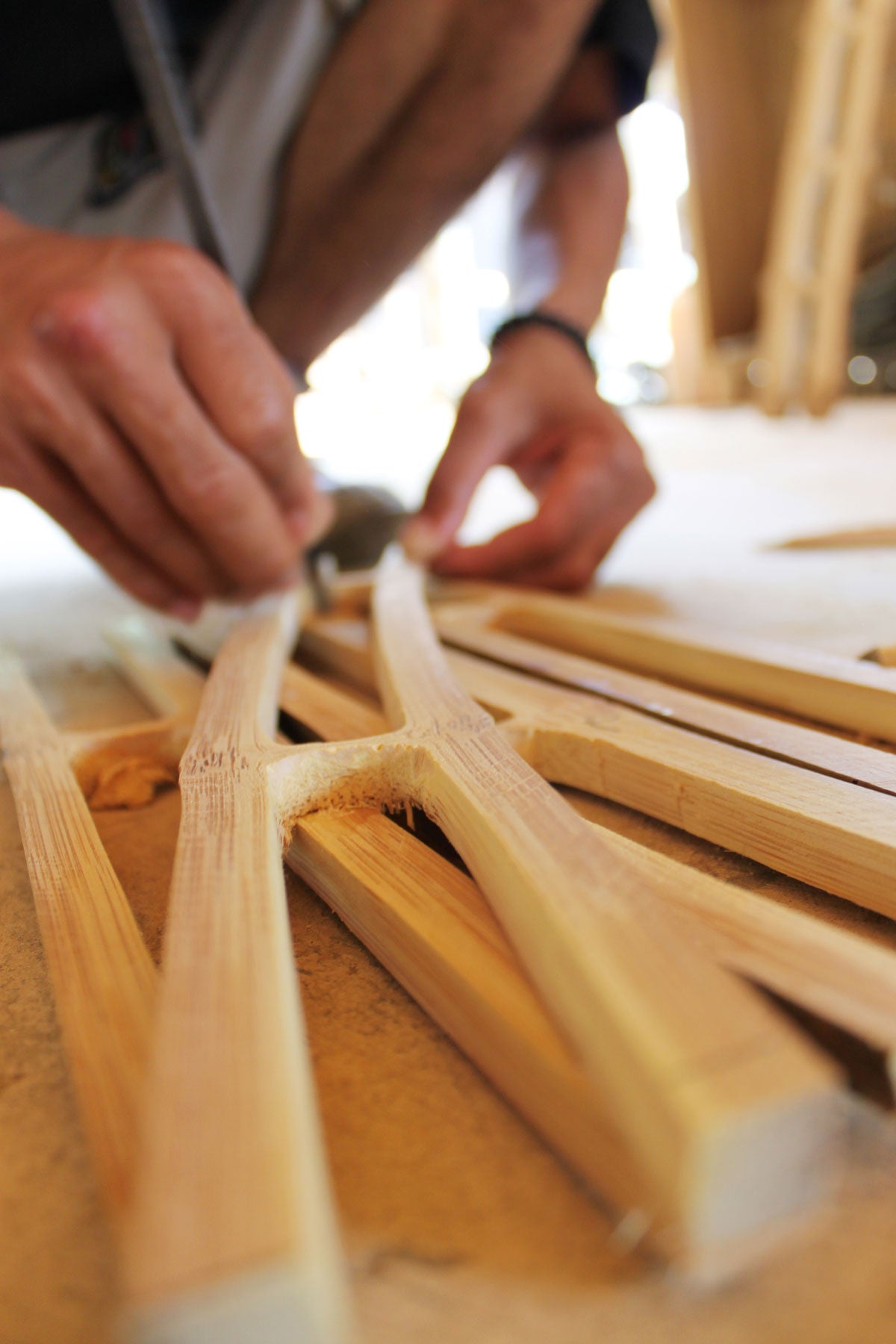This material, which used to be considered only for Asian poor constructions is today one of the most popular ones. In all kinds of constructions, from elegant private homes to office buildings, bamboo has become the protagonist, or at least it has gained ground through details that allow reconnecting concrete spaces with nature.
Bamboo is the world’s fastest growing plant, reason why it is one of the most sustainable materials for construction. This, plus the fact that it offers a high resistance wooden texture – even with a higher compression resistance than wood or concrete and tension similar to that of steel – has turned it into the most sought-after material for construction, with a more eco-friendly approach.
One of the firms, which has experimented the most with this material is called Ibuku, in Bali. Its founder, Elora Hardy, has chosen it as the star for her designs, not only for being highly sustainable (the whole growth cycle ranges from three to six years), but also because it is earthquake-resistant and very light, so it is easy to transport.

It has gained ground over wood thanks to its ability to renovate. Unlike wood, bamboo grows fast, there are some species than can reach one meter high in one week; other kinds can even grow 10 centimeters per hour. Making this substitution can be a solution for deforestation, which is present in several forests across the world since wood takes 20 to 30 years to be mature enough in order to be used.
Same material, a new vision
Architecture using bamboo is not new, it has been around since the 16th century in tropical areas, especially in Asia. In countries like China and India, it was what the poorest communities used to build their homes and usually, these were spaces that did not last for a long time. Now, through different treatments to make it last longer, like products to increase its insect-resistance, it has been adopted for environmental design in Europe and America.
This product’s demand is on the rise. According to information by Grand View Research, the global bamboo market in 2018 was valued at 68,800 million dollars and a 5% annual growth is expected from 2019 through 2025. Investments have intensified, especially those focused on sustainable construction. Increasingly, countries like China and India have strengthened their efforts to promote bamboo beyond the continent; for example, in 2017, the Parliament of India declassified bamboos as trees to widen this material’s lucrative opportunities.

Regarding its weaknesses, its greater enemies are insects, reason why old constructions did not have many survival possibilities for long periods of time. In order to incorporate it to architectural spaces, it is essential for it to be treated against insects, especially termites, in a way that, although it is lightly toxic, makes it indigestible. Another topic to take into consideration is the origin of bamboo plants; those growing in ravines are stronger than the ones from the valleys, while those growing in drier lands are also more solid. Something to consider as well is that, even though the exterior is water resistant and can be of great use, it also limits design, since it is also more resistant to paint; although it is not so necessary, its natural color is very beautiful and has become a standard tone for environmentally friendly constructions.
From the tropic to homes
Practically everything made of wood today could be substituted for bamboo, so it is not necessary to limit it to new constructions, it can also be incorporated into small renovations or simply to decoration aspects.
Floors are one of the best examples. The best ones are high resistance ones, which are not affected by weather changes and require little maintenance. Bamboo does not offer only this, but also, due to its light color, it will provide more light to spaces. Its durability can be compared to that of hardwood floors’.

Wood in bathrooms has always been a challenge, reason why this material could be the solution for a wooden decoration that will not get damaged. Its resistance to humidity and temperature changes even make bamboo bathtubs possible. Inside bathrooms, it is also popular for floors, doors, screens, and accessories. The outcome is very elegant, warm, and spa-worthy.
Wooden blinds provide spaces with an elegant look, in addition to eliminating outside light as needed. Substituting these for bamboo allows to maintain the natural touch with less maintenance since it is a very resistant material to sunlight, thus it has high durability.
The kitchen is another delicate space, where moist and heat make it hard to choose different materials. Cabinets, which are often made of wood can be substituted for bamboo, which not only matches other materials like steel, but it is also highly resistant.
Outdoor pieces of furniture and details can be favored by this material’s waterproof qualities, so exterior walls, doors to outdoor showers, garden furniture and even hot tubs made of bamboo will maintain their aspect for a long time.
cover photo by Alina Vlasova


